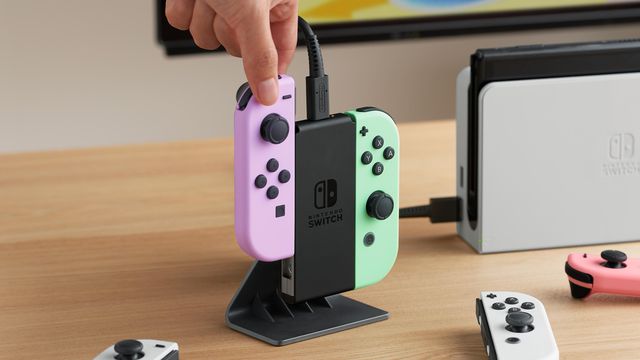The Poco X5 5G isn’t your typical budget smartphone. It has certainly cut a few corners to get its price down to a shocking $220, or thereabouts, but it has some qualities you wouldn’t expect for the price – particularly, a display that’s on another level. This may not be a phone to get if you’re looking for the all-around best device, but if you’re on a tight budget and want a phone that gets the job done and then some, there’s a lot worth considering here.
Poco X5 5G – Design and Features
The Poco X5 is subtle about its budget nature. It has a plastic frame and back cover that are both firm enough that they’re hard to distinguish from more premium materials. The frame, in particular, comes across like many of the aluminum frames on much more expensive phones but lacks the plastic antenna lines necessary to let signal through metal frames. Meanwhile, the rear cover has such a gorgeous velvet-like effect to its coloring that it’s hard to complain about.
Poco is a bit explicit about its branding, slapping “POCO” in a fairly large font on the rear of the phone in the top corner opposite the triple-camera array. I’ve reviewed a few Poco phones, and they invariably include that bold branding.
Perhaps the biggest tell that this is a budget phone comes from what it includes rather than what it lacks: On the top edge of the phone, a headphone jack sits in the corner. So thoroughly erased from the premium flagship segment of the smartphone market, seeing a headphone jack is a strong hint you’re looking at a budget smartphone (or one of Sony’s thoughtful Xperia phones). Poco also includes an IR emitter on that top edge, letting the phone double as a remote control for TVs and the like.

The right edge of the phone includes a fingerprint scanner built into the power button, which I generally find to be more convenient for unlocking the phone most of the time than the popular under-display scanners found on many flagships. On the opposite edge, there’s a SIM card tray that can support two SIM cards or one SIM and one microSD card. Expandable storage is also a dying feature of premium phones despite its convenience, so it’s a plus to see it offered here.
The phone supports 5G, and though US functionality can be questionable for these phones, my SIM card promptly connected the Poco X5 5G to T-Mobile’s 5G network, though not its higher-tier band. Mileage varies, as the phone supports a limited 12 bands of 5G according to GSMArena. In this case, the phone only has one supported band overlapping with those used by T-Mobile.
Though the Poco X5 has a particularly thick bezel below the display, the side and top bezels are respectably thin. It doesn’t end up looking too dated, though Poco’s pre-applied screen protector leaves a little to be desired in terms of placement and quality. Still, it’s better to have than not. For any complaints one might have about bezels, they’re more than offset by the display packed between them.

Poco includes a 6.67-inch AMOLED display that’s sharp at 1,080x2,400 and exceptionally smooth with a 120Hz refresh rate. It pulls off great video playback with all the sultry appeal OLED is capable of thanks to its pitch blacks even alongside bright highlights. Worth noting, not all apps recognize the phone as HDR capable, including YouTube and Netflix, and therefore won’t provide it with HDR content.
Poco X5 5G – Software
The Poco X5 comes running Android 12, but at the time of writing has been updated to Android 13 and has received the July 2023 Android Security Patch. That’s a key consideration for this model over the X5 Pro, which is still on Android 12 despite being the more premium model. Since the Poco X5 is a Xiaomi phone technically, it comes with MIUI and uses the Poco Launcher. In my experience, it’s not a terribly unusual imagining of Android. The home screen doesn’t allow for very in-depth customization, but there are always custom launchers for that.
One peculiarity of MIUI is the compartmentalization of the notification shade and the quick settings shade. Pulling down on the left half of the display brings down the notification shade while pulling down on the right brings out the quick setting – both extending to fill the screen. Most other Android devices I’ve used show both shrunken notification bubbles and a few quick settings at the same time. Once familiar with this flow, it actually makes good sense, as I’m given more notifications or more quick settings all at once, rather than getting both and then needing to take further actions to dig into which one I actually want.

It’s not all great for the software though. The phone comes with considerably more software bloat than I’d like to see. There are some necessary stock apps, like a video player, music player, and clock app. But there’s a lot more unnecessary. To start, there’s a Security app already in the main app dock. There’s also a Cleaner app on the home screen. The phone comes preloaded with Amazon Shopping and AliExpress apps, a few social media apps, and a QEEQ Car Rental app. It also has Genshin Impact pre-installed alongside a handful of generic smartphone games. Some of these pre-installed also get looped into the phone’s main software updates – not Google Play. This may be convenient for some, but I personally don’t want pre-installed games getting updated when I’m trying to update security patches and the like. Fortunately, many of these are easily uninstalled.
Poco X5 5G – Gaming and Performance
Poco generally puts an emphasis on performance for the price, and while it’s not offering the most powerful internals, it’s respectable. Everyday use of the phone is fairly snappy, though some actions come with a modicum of lag, such as having the screen rotate while displaying a video. That same screen rotation transitions much more smoothly while displaying a webpage.
Apps load fairly quickly, and even last in memory surprisingly long. Jumping about from YouTube and Netflix over to a match of Call of Duty Mobile and some quick texting, I could still go back to YouTube and Netflix and pick up where I’d left off in less than a second.

The Snapdragon 695G chipset offers a decent showing in gaming, though it stuttered from time to time in Call of Duty Mobile at the High presets for graphics and frame rates. It puts on a good show for Genshin Impact, where it's modestly smooth in the Medium graphics preset (with refresh rate upped to 60). It has the occasional stutter and frame drop, but it’s undeniably playable. It gets a little warm running Genshin Impact for more than a half hour, but not toasty or uncomfortable as long as screen brightness isn’t maxed too. The heat largely peaked after 30 minutes too, feeling the same after an hour.
The Poco X5 5G is outpaced by some other low-cost phones, but it keeps its price well below theirs. Notably, the higher-end Poco X5 Pro 5G offers more performance and features, scoring almost 1.5 times higher in Geekbench 6’s CPU test and more than double in the GPU test, but it comes with a nearly 50% uptick in price. Meanwhile the Pixel 7a (or even better, the Pixel 7 when on sale) can run considerably faster, offering closer to a 1.7x bump in CPU performance and a 4x increase in GPU performance as measured in Geekbench 6. With a fast internet connection, the Poco X5 could be a good fit for cloud gaming to make up for its on-device performance deficit.
While the Poco X5 5G may be a little lacking in power, it’s strong in efficiency. Playing a movie on Netflix over Wi-Fi with the screen set to max brightness, the battery only drained 5% after an hour. Load up the phone for a flight with downloaded content and turn off all the radios, and this thing could be running to the opposite side of the globe.

Poco X5 5G – Cameras
As with most budget phones, the cameras on the Poco X5 5G are not a strong point.
Here are the cameras the Poco X5 5G includes:
- 48MP Wide, 0.64-micron, f/1.8
- 8MP Ultrawide, f/2.2, 118-degree FOV
- 2MP Macro, f2.4
- 13MP Selfie, f/2.45
Despite Poco’s clear inclusion of a third camera and listing of a Macro sensor among the specifications, I could find no actual means of activating or taking photos with that Macro sensor. As such, there was no way to take ultra-close-up shots. This shows just how much of an afterthought some of these tertiary cameras can be.
The photos are altogether not very good. The main sensor produces exciting colors in good lighting, but can skew a little cold and offer rather over-emphasized contrast. Even in bright conditions, the photos it captures are fairly grainy when viewed at full size. This blow to clarity is doubled down on when night hits, as dark settings become a mess of noise and blur thanks to the limited light-gathering potential of the small pixels on this camera.
Every weakness of the main sensor is simply dialed up to 11 on the ultra-wide camera. Its photos may get more into the field of view, but they’re dimmer, plagued with noise, and look a bit like a webcam produced them.
The selfie camera is perhaps the best of the bunch. Even in less than ideal conditions, it at least produces a picture with sharp, natural details on my face – no weird angel-face smoothing or mess of blurry beard.







